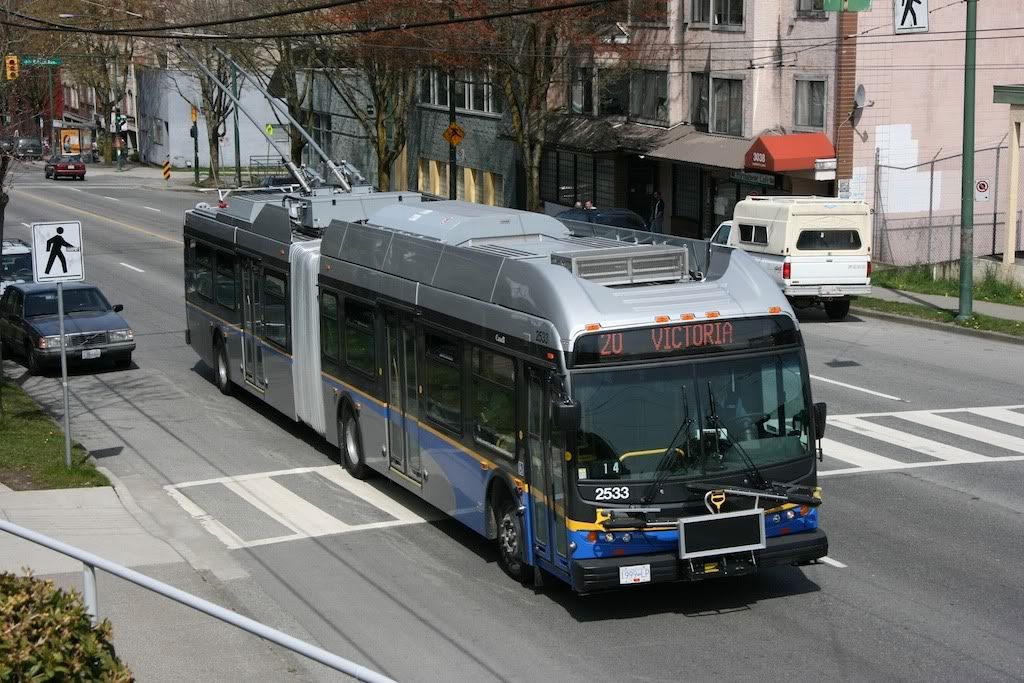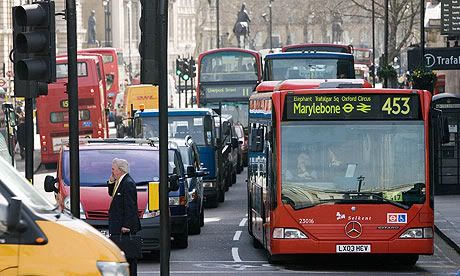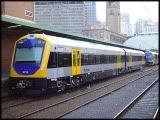(2 PM – promoted by TheMomCat)
This is a repeat of a Sunday Train that originally ran on 24 January 2010
 Note that the statement is abbreviated for the title. The full statement is, a common carrier like a train, bus, or plane that running a profit based on passenger revenue while paying its full operating and capital cost is charging too much for its tickets.
Note that the statement is abbreviated for the title. The full statement is, a common carrier like a train, bus, or plane that running a profit based on passenger revenue while paying its full operating and capital cost is charging too much for its tickets.
The radical abbreviation of the title is in part because of the radical abbreviation of the lie that is commonly used as a frame. The lie is that a common carrier like a train, bus or plane that is paying for its full operating and capital costs out of passenger revenue ought to run a profit, commonly expressed as a charge of, “SERVICE_XYZ is losing money, it needs to be reformed!“, which assumes that Service_XYZ is supposed to be making a profit.
And, of course, in the sense described above, if its a common carrier transport service, of course it shouldn’t be making a profit. And further, if under the above conditions, if its making a profit, you’re doing it wrong. In the sense given above, PROFIT=FAIL.
This is problematic under our economic system, because under our economic system, running a profit on the full cost of production normally means that you are free to continue without substantial outside interference, while not making a profit implies that you have to go cap in hand begging for money to operate. So if the main assertion is correct, we have a situation where you can be doing it wrong, and be free to continue, or be doing it right, and have to constantly beg for permission to continue doing it right.
The Services Provide by a Common Carrier Transport Service
 A common carrier transport service provides multiple services.
A common carrier transport service provides multiple services.
- The passenger taking the service receives a direct benefit
- The passenger choosing an alternate means of transport receives an insurance benefit in the form of an available back-up means of transport in case the preferred alternative fails
- In the US and most Western nations, common carrier transport services are more space-efficient than the most common semi-private private vehicle transport, the automobile, so the passenger taking the common carrier service is providing a congestion benefit to semi-private motorists
- Common carriers normally operate with designated origin and destination points, which concentrates foot traffic and creates property value
- When compared to semi-private automotive transport, common carrier rolling stock is normally far more intensively employed, substantially reducing rolling stock material overheads per passenger mile
- These are in addition to the general external benefits of transport in permitting people to congregate, to the benefit of employers, retailers, and a wide range of service providers
- These are also in addition to specific advantages or disadvantages of specific technologies, such as the intrinsic energy efficiency and aggregate labor efficiency of coupled vehicles operated in a train over uncoupled vehicles operated individually, and the high death toll of cars from, first and foremost, pollution and, secondarily, accidents.
The value of the common carrier ticket reflects the direct benefit to the passenger, and some but not all of the insurance value of the existence of the service. It cannot include congestion benefits, intrinsically experienced by those not taking the common carrier, and does not include any property value benefits.
 The material efficiencies of use of the rolling stock would be captured in the capital cost of the system – except there are substantial material costs that we simply ignore. Handing a free ride, for example, to those dumping CO2 into the atmosphere despite the fact that they have done nothing to establish that it is safe to do so – is only one of the more egregious examples.
The material efficiencies of use of the rolling stock would be captured in the capital cost of the system – except there are substantial material costs that we simply ignore. Handing a free ride, for example, to those dumping CO2 into the atmosphere despite the fact that they have done nothing to establish that it is safe to do so – is only one of the more egregious examples.
All common carriers offer intrinsic and automatic transport insurance benefits to users of alternative systems, and that benefit can only be partially captured in ticket prices. It is possible, of course, to charge a higher price to a person that bought a ticket closer to the day of departure, ordinarily presented to the passenger as a discount for buying the ticket a certain period in advance. However, it is not possible to distinguish between a specific transport need that arises close to the departure date and a need to switch to a back-up mode that arises close to the departure date.
So demanding that trains, buses, and planes fully “pay for” their full economic costs out of ticket revenues alone is always expecting passengers to pay for somebody else’s benefit.
This should be no surprise: “user pays” more often than not is a shorthand for, “the poor sucker who has had the bad luck to be dubbed ‘user’ subsidizes the other beneficiaries”. In reality, those on the public right of way may be using space freed by common carrier passengers, as well as using the self-insurance of a fall-back option, and if the common carrier transport is more energy and emissions efficient, using the fuel and CO2 dumping capacity freed up by the common carrier transport. …
… And as they put their fellow citizens in the hospital at higher rates due to pollution and the inherent danger of having the majority of the population act as chauffeurs irrespective of their skill at or inclination toward engaging safe driving, the health sector capacity freed up by those relying on common carrier transport.
What About Beneficiary Pays, Then?
So, what if we had a Beneficiary Pays system?
 Those private users of a congested public resource like the public roadway would pay users of common carriers based on the relative space efficiency of that common carrier. So mass transit would get the most subsidy per seat, then various forms of light rail, then (actual) Bus Rapid Transit and Quality Buses, then shuttle buses. This payment would be for seats occupied over the load factor that has the same space consumption as the average private vehicle.
Those private users of a congested public resource like the public roadway would pay users of common carriers based on the relative space efficiency of that common carrier. So mass transit would get the most subsidy per seat, then various forms of light rail, then (actual) Bus Rapid Transit and Quality Buses, then shuttle buses. This payment would be for seats occupied over the load factor that has the same space consumption as the average private vehicle.
In our Petroleum Import Strategically Dependent nation, those private users of petroleum consuming vehicles would pay users of common carriers based on the relative petroleum consumption – the maximum subsidy to electric vehicles, then to high load factor trains, then to high load factor buses. This payment would be for seats occupied over the load factor that has the same petroleum consumption as the average private vehicle.
All private vehicle operators would, of course, pay for the existence of common carrier transport. This payment would be for the frequency of trips to distinct destinations.
 And all property owners served by common carriers would pay a property tax to reflect the portion of their property value supported by the existence of the common carrier. Since it is dedicated transport corridors that have clearly discernable property value benefits, this payment would be distributed by the frequency of trips on dedicated transport corridors to distinct destinations.
And all property owners served by common carriers would pay a property tax to reflect the portion of their property value supported by the existence of the common carrier. Since it is dedicated transport corridors that have clearly discernable property value benefits, this payment would be distributed by the frequency of trips on dedicated transport corridors to distinct destinations.
Short Term Versus Long Term
Now, this is not a proposal for Congressional Action in 2010 [or 2013]. Just as the radical reactionaries who adopt the pretense of labeling as “conservative” the desire to destroy the gains of the Square Deal and the New Deal pushed both short term and long term messaging, we have to be able to push both short term and long term messaging. And this is part of the long term messaging:
- ALL the beneficiaries should pay, not just the users
Heck, its short enough to twitter: “All who benefit should pay, not just riders” … 44 letters. 20 characters for a bit.ly link and you still have 70+ characters for usernames, retweets, and additional remarks.
But short term, keep it in mind when arguing in favor of whatever funding source is being cobbled together to support feasibly ecologically sustainable transport by electric rail, rail that can later be upgraded to electric rail, and electric trolley buses … throw it into the argument. “ALL who benefit should pay, not just the riders”.
Oh, and don’t forget the occasional “of course you want the system to make a profit – you are trying to take a free ride off the fares paid by the riders” if you get the mental inhabitant of one of the libertarian fantasy universe engaged in conversation.
Because if well run train system on a well-chosen corridor is running a profit – then cutting the fares and eliminating the profit would offer more benefit all around.

1 comment
Author
… just as they were when gas hit $5 in 2008, and just as they were when gas hit $1 in the early 70’s (which was $5 in terms of purchasing power in 2013 dollars) …
… its another Short Memory problem …